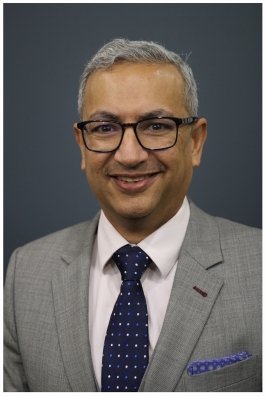Medical and Oral Health Education through Interprofessional Collaboration
In this Harvard Macy Institute blog post, the importance of integrating oral health into whole-person and interprofessional education is discussed.

In today’s interconnected world, health professions education must evolve to reflect the integrated nature of health itself. One of the most enduring and impactful divides in medical and health professions education lies in the separation of medicine and dentistry—a historical silo that has shaped not only how we train clinicians, but how we deliver care, conduct research, allocate funding, and ultimately, how patients experience the health system as well as how clinicians treat patients in public and private settings.
What Do We Mean by Oral Health?
Oral health is far more than just healthy teeth. Oral health includes the ability to speak, smile, chew, and express emotions—without pain, discomfort, or disease. Oral health encompasses a wide spectrum of conditions across the lifespan: from the more obvious dental caries, periodontal disease, and oral cancers, to congenital and developmental anomalies such as cleft lip and palate, mucosal lesions, traumatic injuries, and cancrum oris or noma, the face of poverty. The global burden is staggering: 3.5 billion people worldwide are affected by oral diseases.
Yet, oral health remains siloed—educationally, clinically, and financially. Dentistry operates under a separate educational model, different insurance and reimbursement structures, and minimal integration with other health data systems. This divide has significant consequences for patients, clinicians, and the public.
A Need for Change
There is no shortage of calls for reform. An established group of academics proclaimed in the La Cascada Declaration that the current oral health system is broken and demands radical transformation. The Lancet Series on Oral Health brought needed attention to the wide scope of oral diseases to a medical audience, reinforcing this need for systemic change. Globally, the WHO, Surgeon General’s Reports in 2000 and 2020, and the National Academies (NASEM) Report on Temporomandibular Disorders emphasize the urgency of integration. In 2023, noma—a devastating orofacial disease—was recognized as a neglected tropical disease (NTD), underscoring the public health significance of oral health. Polling from CareQuest Institute for Oral Health shows that the public increasingly supports integrated oral-medical care. Patients often express confusion: “Why isn’t my health insurance required to cover pain in my mouth or jaw? Why can’t my physician and dentist coordinate my care?” Their frustration is rooted in the outdated structures we have inherited, but have the power to change.
The Growing Medical-Oral Link
Our scientific understanding reinforces this urgency. The oral-systemic health connection is well documented. Oral disease is linked with cardiovascular disease, obesity, diabetes, adverse birth outcomes, and Alzheimer’s. Oral bacteria play roles in respiratory infections, sepsis, and other complex conditions. The microbial diversity of the oral cavity and its relationship to oral and systemic diseases holds significant promise for advancing diagnostic and precision medicine. Yet, medical and nursing education provide limited exposure to oral health. Interprofessional collaboration with oral health remains largely unaddressed today.
The Harvard Macy Secret Sauce
Many of the Harvard Macy Institute (HMI) scholars I have met share the sense that there is something special and uniquely uplifting about the HMI community, which I have difficulty articulating. Yet, the core faculty, much like Mr. Ping from the movie Kung Fu Panda, insist there is no one secret ingredient. In the film, Po discovers that the secret is within you. At HMI, the power lies within a devoted, well-organized community that leads, lifts, collaborates, and inspires each other.
It was this spirit of embracing lessons learned, including harnessing virtual teaching, adopting digital learning strategies, fostering cross-disciplinary collaborations, and amplifying neglected voices, that inspired my vision for the Johns Hopkins Global Oral Health Symposium. What I learned through HMI helped generate energy and engagement among a diverse audience of clinicians, researchers, policy advocates, and students. The event tackled wide-ranging themes, including local to global implications of environment and climate, antibiotic stewardship, workforce development, humanitarian health, patient safety, artificial intelligence, health informatics, and economics, challenging conventional boundaries of what an oral health conference can and should address.
Reimagining the Future of Health Education
Interprofessional education (IPE) is a powerful tool to dismantle the silos across health professions. There are some actionable steps we can take to improve collaborative health education programming. Patient-centered cases that incorporate complex yet common topics such as oral lesions, mucositis or dry mouth with head and neck cancer; oral hygiene challenges with physical challenges to the upper extremity; or oral health challenges and compromised immune systems or other complex medical presentations. Consider inviting oral health professionals as core faculty to assist in curriculum planning; co-develop and teach cases that encourage future collaborations. Incorporate community and patient advocacy voices where patients with complex conditions such as complex pain, oral cancer, and congenital disorders participate in teaching panels to advance training and patient care.
A Call to the HMI Community
A few days ago, a colleague who attended the conference asked me what the secret was to engaging with such a diverse crowd. I smiled and said “sign up for a Harvard Macy course!” The HMI community is empowering and collaborative, which is exactly what we need to incorporate oral health into health professions curricula - not simply as an elective, but as a core component. With an expanded definition of oral health, we must also expand access, include underserved populations, and integrate recognized dental specialties focused on the medical aspects of the mouth and its surrounding structures into health education and delivery. If you are a curriculum designer, faculty member, public health professional, or clinical leader—you are part of the solution. It is time to build a future where oral health is no longer an afterthought, but a fundamental part of whole-person care. Let us dismantle the silos of the past—and create new models rooted in connection, collaboration, and compassion.
Author Bio

Sujay A. J. Mehta, DMD, MPH (Educators ‘24; T3 ‘25) is Director of Global Health Education at Solidarity Dental Foundation. HMI has made an impact on Sujay’s career by encouraging unique learning collaborations across disciplines. Sujay’s professional interests include medical humanities, mentoring, and integrating oral diseases into medicine and public health. Sujay can be followed on LinkedIn or contacted via email.
